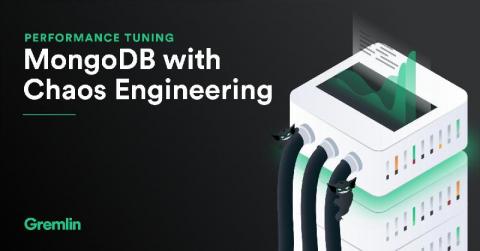Operations | Monitoring | ITSM | DevOps | Cloud
Latest News
Performance tuning MongoDB with Chaos Engineering
You’ve pored over the MongoDB documentation, crafted highly polished and well-tuned queries, and confidently deployed your new code to production. Everything ran great at first, but once CPU or RAM usage hit a certain point, your queries suddenly slowed to a crawl. What happened, and how can you prepare for situations like this in the future? This is an unfortunate but common scenario with databases like MongoDB.
How to Automate the End-to-End Lifecycle of Machine Learning Applications
Machine Learning (and deep learning) applications are quickly gaining in popularity, but keeping the process agile by continuously improving it is getting more and more complex. There are many reasons for this, but primarily, behaviors are complex and difficult to anticipate, making them resistant to proper testing, harder to explain, and thus not easy to improve.
Alien Wavelengths to Shared Spectrum
Alien wavelengths are commonplace today. Here a transponder pair from one optical system vendor connects to, and transmits over, the optical line system (OLS) – constituting fixed/reconfigurable multiplexer and amplification elements primarily – from another vendor. (While it can be technically feasible to pair transponders from different vendors, typically this is not done for commercial and operational reasons.)
A Timeline of Resource Use
I’m a bit of a data nerd. And like many fortunate people, I’m still working from and generally staying home and have a lot spare time on my hands. So what does that combination result in? Graphs!
Azure Functions Live - June 2020
SRE: A Human Approach to Systems
AWS EBS Volumes: 5 Ways to Optimize Performance and Costs
Amazon Elastic Block Store (EBS) provides block storage for applications that are running in the cloud. However, not every company is getting the most out of the EBS volumes they are using. Some companies can pay too much for EBS volumes without utilizing the allocated storage and IOPS. Other organizations may pay high prices because they are using the wrong disk type for their needs. This article explains five techniques you can use to optimize the performance of your EBS workloads.
Netdata Agent v1.23: Kubernetes monitoring & eBPF observability
Deploying and monitoring performance for an entire Kubernetes cluster can be complex. To simplify the process, we’ve added service discovery functionality to eliminate complex configuration, in addition to more advanced monitoring for viewing activity inside containers. Service discovery identifies k8s pods running on a cluster and immediately starts monitoring system performance. All containers are identified, regardless of complexity.
Report: Lambda use among Blue Matador users in 2020
It’s no secret that AWS Lambda adoption has grown steadily since AWS first released it in 2015—and for good reason. The benefits of adopting Lambda are many: leveraging Lambda eliminates the need to provision and manage servers, enabling teams to just focus on their code without the mental and operational overhead of worrying about the underlying infrastructure.











